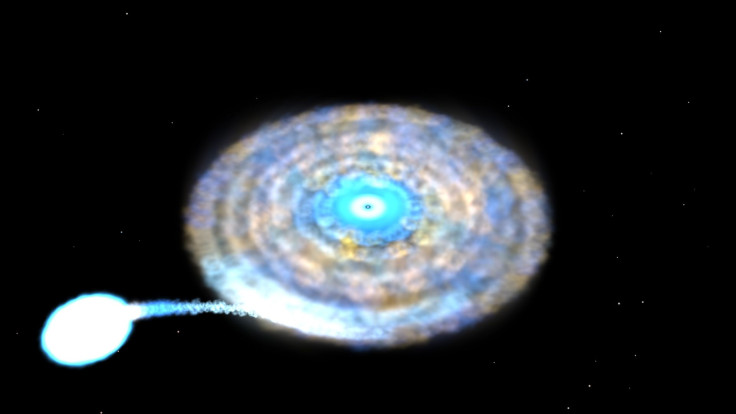NASA Finds X-Ray Pulsar With Fastest Known Orbit In Binary System

The universe is full of phenomena that boggle the mind, given how difficult it is to imagine the sheer scale and speed of many things. Adding to that list is the discovery of an X-ray pulsar with the fastest known orbit for its class of pulsar binary systems.
Pulsars are rapidly spinning neutron stars, which are formed when the core of a massive star collapses after a supernova (the process can also form black holes). Much like black holes and neutron stars, they are extremely dense objects, and their X-ray fluctuations are very predictable, making them a possible aid to future navigation of spacecraft.
IGR J17062–6143 (J17062 for short) is a binary system home to the pulsar and another star, which is most likely a white dwarf, poor in hydrogen. The pair was observed using data from NASA’s Neutron star Interior Composition Explorer (NICER) mission, which was installed on the International Space Station in June 2017.
Analysis of NICER data showed the two stars orbit each other every 38 minutes, separated by a distance of 186,000 miles (300,000 kilometers), which is less than the distance of the moon from Earth. J17062 was observed by NICER for over seven hours, spread across 5.3 days, allowing scientists to confirm its record-setting orbital period. It was the short distance between the two stars that allowed scientists to determine the nature of the smaller companion.
“It’s not possible for a hydrogen-rich star, like our Sun, to be the pulsar’s companion. You can’t fit a star like that into an orbit so small,” Tod Strohmayer, an astrophysicist at NASA’s Goddard Space Flight Center and lead author of a paper on the subject, said in a statement Thursday.
An earlier, 20-minute observation of J17062, carried out in 2008, showed its X-ray pulses occurred 163 times every second, which meant the pulsar was rotating about its own axis almost 10,000 times every minute. The orbits of the two stars around each other are circular, a common occurrence in the case of accreting millisecond X-ray pulsars (AMXP), which is how this specimen has been classified.
The AMXP is much more massive than its companion. The white dwarf is less than 2 percent of the sun’s mass, while the pulsar is 1.4 times more massive than the sun. Despite the huge difference in their masses, the smaller star exerts a small gravitational tug on the pulsar. But it also means the AMXP is siphoning off gas from the white dwarf.
The study was published online Wednesday in the Astrophysical Journal Letters under the title “NICER Discovers the Ultracompact Orbit of the Accreting Millisecond Pulsar IGR J17062–6143.”
NICER’s objective, as its name suggests, is to study the physics and behavior of neutron stars. They are akin to laboratories of subatomic physics that is impossible to recreate on Earth.
© Copyright IBTimes 2025. All rights reserved.



















